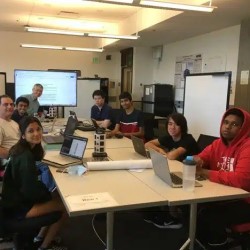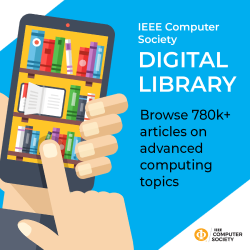Reviewer Guidelines for IEEE Computer Society Publications
Here, we provide the information you need to successfully peer-review for an IEEE Computer Society publication.
Becoming a Reviewer
We match reviewers to submissions based on keywords in our online peer review system, ScholarOne Manuscripts. Therefore, you need an account in the system to become a reviewer. Please go to ScholarOne and check whether you already have an account. If you have an account, please check that the information is up to date, especially with regard to the keywords you have selected representing your areas of expertise. If you do not have an account, please create one and enter keywords representing your expertise areas.
Keywords should be selected from the ACM taxonomy (PDF) provided in ScholarOne. (This keyword list is an extended version of the ACM Computing Classification System, used with permission.) If you do not see a word that closely reflects your expertise area in the list, then you may type the appropriate word into the text box. We recommend that you enter a minimum of three keywords.
The Reviewer Role
We assign three or more reviewers per submission according to the publication and/or the article’s topic. If you happen to be one of them, we will email you a request to review. If you accept the request, most publications will ask you to finish the review within three weeks. If a shorter timeline is required to meet an issue deadline, you will be notified. IEEE Open Journal of the Computer Society follows an expedited peer review schedule and therefore requests reviews within one week.
It is imperative that reviewers do not reveal their identities to the author(s) of papers they are reviewing. Reviewers are responsible for removing all identifiers from supporting materials that they submit as part of their review. To preserve the integrity of the review process, the peer review administrator can communicate any necessary information anonymously to the author on behalf of the reviewer.
IEEE requires that reviewers treat the contents of papers under review as confidential information not to be disclosed to others before publication. It is expected that no one with access to a paper under review will make any inappropriate use of the special knowledge that access provides. To guarantee fairness to the author(s), the reviewer should abide by the following:
- Assume that papers submitted for publication are not meant to be public.
- Do not use material from a paper you have reviewed.
- Do not share material from a paper you have reviewed with others.
- Do not distribute copies of a paper you have been asked to review unless the material is already public.
- Tell the editor, guest editor, and/or editor-in-chief if there are any conflicts of interest (COIs) involved in reviewing a paper, including any real, perceived, or potential COI between you and any coauthor. COI is defined in IEEE Policies, Section 9.9 – Conflict of Interest (PDF).
- COIs include the following:
- Your PhD advisor, post-doctoral advisor, PhD students, and post-doctoral advisees, forever.
- Family relations by blood or marriage, or their equivalent, forever.
- People with whom you have collaborated in the past five years, including co-authors of accepted/rejected/pending papers and grant proposals.
- Funders (decision-makers) of your research grants, and researchers whom you fund.
- People (including students) who share or shared your primary institution(s) now or in the past five years.
- Other relationships, such as close personal friendship, that might affect your judgment or could be seen as doing so by a reasonable person familiar with the relationship.
- COIs include the following:
Preliminary/Conference Versions
If an author used their own previously published material as a basis for a new submission, please check to ensure that they have cited the previous work(s) and have clearly indicated how the new submission offers substantively novel or different contributions beyond those of the previously published work(s). The author should have included a brief description of the differences between the previous work and the submission. You may use the public comments section of the review form to include your thoughts, if any, regarding the differences between the two papers.
Concurrent/Dual Submissions
Submissions to IEEE Computer Society publications must represent original material. If it is determined that a paper appears in or will appear in any other publication before the editorial process is completed, the paper will be automatically rejected. Please inform the peer review administrator of any possible concurrent submission.
Writing a Review
Start by identifying the type of manuscript (such as research, tutorial, survey, or case study). Recognize the publication’s reference number limit and word or length limit (click here to navigate to publication-specific information about these limits).
Comment on the appropriateness of methods, analyses, results, and conclusions, as well as on the technical significance and accuracy of the work. You may also assess whether the use of references and footnotes is appropriate. Suggest specific improvements to the paper. Describe how to revise the manuscript to give it focus and organization.
Reviews should be constructive and objective; don’t include personal comments or biases about the author or subject matter. Don’t identify yourself or your work in your review. Additionally, it is unacceptable for a reviewer to require additional citations for the sole purpose of influencing bibliometric measures of either an individual or a periodical, as mentioned in the IEEE PSPB Operations Manual Section 8.2.2.4 (PDF).
For reviewers of journal articles, to help authors adhere to our long-standing page limitations and formatting guidelines, please suggest ways to manage the length of a manuscript should you recommend that the author add new content. Your suggestions as to what may be removed or shortened will help them meet the publication’s requirements.
Making a Recommendation
Please read our guide for making recommendations. As a reviewer, you are tasked with providing a recommendation as to the final outcome of the paper to the editor or guest editor, who will consider your recommendation in their assessment of the paper.
If you submit a recommendation in error, please contact the editor or guest editor immediately. They may be able to rescind your review for revision, as long as it does not impede the review process in any way.
After Reviewing
You have access to all the reviews you have submitted for any Computer Society publication through the ScholarOne Reviewer Center. If you review for multiple publications, keep in mind that you must be logged on to a particular publication’s ScholarOne site to view your submitted reviews for that publication.
If you need to obtain official documentation of your reviewer contribution (for example, for a year-end review or a degree), please make your request to the peer review administrator. Be sure to indicate the reason for the request and, if necessary, the deadline by which you must submit the documentation.
If you can no longer serve as a reviewer for a particular publication, please contact the peer review administrator, who can update your ScholarOne account (for example, Specialty/Area of Expertise, Keywords, and Unavailable Dates and E-Mail Exemptions sections).
Web of Science Reviewer Recognition Service
The Web of Science Reviewer Recognition Service, formerly known as Publons, is an online platform for reviewers to document and verify any of their review-related contributions. The free website can be used to highlight the reviewer’s previous experience for performance evaluations, job applications, and funding applications.






